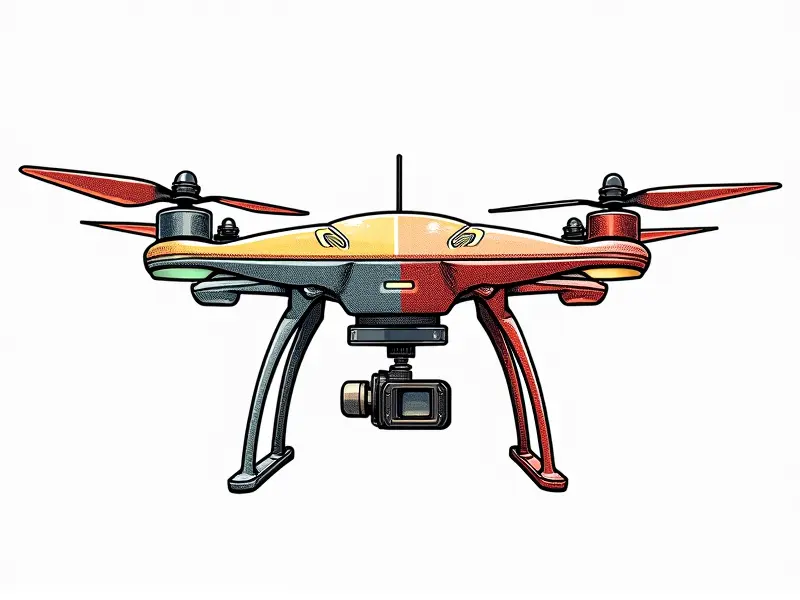Basic drone flight controls

Mastering Drone Flight Controls in Minutes
Welcome to the world of drone flying! Whether you're a beginner or looking to refine your skills, mastering basic drone flight controls is essential for safe and efficient operation. This guide will walk you through everything you need to know to get started with confidence.
Beginner's Guide to Basic Drone Controls
Before taking off, familiarize yourself with the key components of a typical drone remote controller:
- Throttle Stick: This controls the altitude and speed of your drone. Push it forward to ascend or backward to descend.
- Aileron Stick (Roll Control): Move this stick left or right to tilt the drone's wings, allowing you to bank left or right.
- Elevator Stick (Pitch Control): Push forward to move the drone forward and backward. Pull back to slow down or reverse direction.
- Rudder Stick (Yaw Control): Use this stick to rotate your drone clockwise or counterclockwise, essential for precise positioning.
Essential Drone Flight Control Techniques
To become proficient in flying a drone, you need to master several fundamental techniques:
- Landing and Takeoff: Practice smooth takeoffs and landings. Ensure the drone is steady before initiating either action.
- Moving Horizontally: Use pitch control for forward and backward movement, and aileron control to move left or right.
- Hovering: Learn to maintain stability in one spot by balancing all controls simultaneously. Hovering is crucial for capturing still shots.
Flying Like a Pro: Basic Drone Controls
To elevate your drone flying skills, focus on these advanced techniques:
- Smooth Transitions: Practice transitioning smoothly between different flight modes and maneuvers without jerky movements.
- Camera Control: Learn to operate the gimbal for smooth camera movement while maintaining drone stability.
- Situational Awareness: Always be aware of your surroundings, including obstacles and other aircraft. Use GPS features to maintain control.
Quick Start Guide: Drone Flight Basics
Here’s a quick rundown on how to get started with basic drone flight controls:
- Charge Your Battery: Ensure your battery is fully charged before flying.
- Check Weather Conditions: Fly in calm weather conditions for optimal performance and safety.
- Perform Pre-Flight Checks: Inspect the drone and remote controller for any damages or loose parts. Check GPS connectivity.
Top Tips for Controlling Your Drone
To enhance your flying experience, consider these tips:
- Practice in Open Areas: Start practicing in open fields with no obstacles to avoid collisions.
- Use Training Modes: Many drones offer training modes that limit the drone’s range and speed for safer learning environments.
- Watch Tutorial Videos: There are numerous online tutorials available that can provide visual guidance on flying techniques.
Navigate with Ease: Basic Drone Controls
Moving your drone through space requires a good understanding of navigation controls:
- GPS Lock: Use GPS to maintain position and return to home safely. This is particularly useful for beginners.
- Waypoint Navigation: Learn how to program waypoints for autonomous flight paths, essential for advanced photography and videography.
Simplified Drone Flight Controls Explained
Understanding the basic controls can be daunting at first. Here’s a simplified breakdown:
- Throttle Stick: Up to ascend, down to descend.
- Aileron Stick: Left for left bank, right for right bank.
- Elevator Stick: Forward for forward movement, backward for reverse.
- Rudder Stick: Clockwise or counterclockwise rotation.
Beginner-Friendly Drone Control Tutorial
This tutorial is designed to help beginners understand and practice basic drone controls:
- Start with Hovering: Practice maintaining a steady hover for several minutes. This builds your hand-eye coordination.
- Moving in Straight Lines: Focus on moving the drone forward, backward, left, and right in straight lines without drifting sideways.
- Turning Exercises: Learn to rotate the drone smoothly using yaw control. Practice turning 90 degrees clockwise and counterclockwise.
Essential Drone Controls for New Pilots
New pilots should focus on mastering these essential controls:
- Throttle Control: Adjust altitude smoothly to avoid sudden drops or climbs.
- Aileron and Elevator Coordination: Combine aileron and elevator movements for smooth turns and transitions.
- Rudder Control: Use yaw control effectively to align the drone with your desired direction of travel.
Flying Made Easy: Learn Drone Controls Fast
To accelerate your learning curve, follow these steps:
- Start Small: Begin with short flights and gradually increase duration as you gain confidence.
- Practice Regularly: Consistent practice is key to improving your skills. Set aside time each week for flying sessions.
- Seek Feedback: Join online forums or local drone clubs where experienced pilots can provide guidance and feedback.
Conclusion
Mastery of basic drone flight controls is the cornerstone of safe and effective drone operation. By following this guide, you’ll be well on your way to becoming a proficient drone pilot. Remember to practice regularly, stay informed about regulations, and always prioritize safety. Happy flying!

